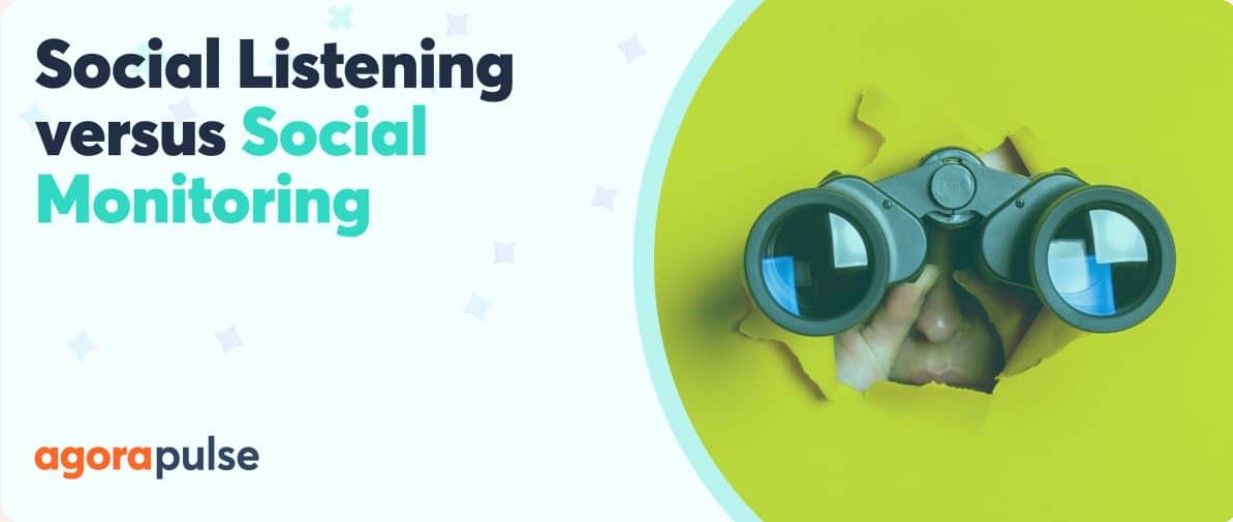Dark social sounds sinister, but it’s simply a term that describes the private and invisible sharing of content and brand mentions across social channels. For marketers, these unknown interactions can be a challenge. They mess up metrics, can lead to skewed data and make it harder for brands to understand the consumer journey from start to finish. They can also lead to missed ROI opportunities and potential brand reputation damage. Let’s take a look at dark social and how to track it.
What is Dark Social?
Coined by American journalist, Alexis Madrigal, back in 2012, dark social refers to the ‘invisible’ shares between consumers that brands can’t easily monitor. Rather than posting directly on platforms such as Instagram, Facebook or Twitter, engagement is happening through channels like direct messaging, email, private groups and other means that are notoriously hard to track by analytics tools or software. While exact figures are hard to make sense of in the world of dark social, this kind of interaction could be responsible for as much as 84% of all referral traffic. Wowza.
Examples of Dark Social
If you share a link to a pair of super cool trainers with your friend on Facebook Messenger and ask their opinion, you’ve shared it via dark social. Other examples of dark social include:
- Private messaging apps such as WhatsApp. With this platform alone boasting a whopping 2.7 billion active users, that’s a whole lot of potential for dark social activity – especially when over 100 billion messages are sent daily.
- These are private and typically untraceable by analytics. The number of emails sent per day in 2023 is 347.2 billion – a 4.3% increase from 2022.
- Comments and tags on certain advertising comment sections.
- Private messages inside native apps such as Facebook Messenger, Instagram and such like. Over 100 billion messages are sent through Facebook Messenger daily, with 2.5 million Messenger groups started every day. Closed groups are a huge source of dark social content, fuelled by all kinds of chat topics.
- Web traffic sources, if someone clicks a link to your website from an unsecured page.
- Word of mouth, including podcast mentions, radio reviews, in-person conversations and telephone chats with your bestie.
From these stats alone, it’s clear just how much data marketers are missing.
Why is Dark Social Significant?
Dark social isn’t something that can be ignored. It’s a heavyweight in the marketing ring, with a recent experiment by analytics expert, Steve Lamar, showing how inaccurate tracking reports can be. The study looked at dark traffic on major social networks, revealing how dark social falsely attributes significant percentages of web traffic as ‘direct’. Here’s a rundown of the findings.
- 100% of all visits from TikTok, Slack, Discord, Mastodon and WhatsApp were marked as ‘direct’ and contained no other referral information.
- 75% of visits from Facebook Messenger contained no referral information.
- Instagram messaged (DMs) as well as public LinkedIn and Pinterest posts also missed substantial portions of referral data (30%, 14% and 12% respectively.
While Google Analytics is a good place to view your direct traffic, you must be aware that not all visitors are typing your URL into their browser. Sorry! Google has a habit of sticking anything in the ‘direct views’ category if it can’t be attributed anywhere else. Hello dark social!
How to Measure Dark Social
Despite all the secrecy around dark social, there are ways to track it and find the data you’re looking for. For the first time in your life (perhaps) you’re allowed to be a little bit nosey (for the sake of your brand, of course). Here are a few ideas:
#1 Set up UTMs and Referral Links
A UTM link is any URL with specific UTM code attached. These UTM parameters identify your URL so that you can track each link and where it comes from. Common UTM tracking parameters include:
- Source – Facebook, Instagram, email and so on.
- Medium – organic social, paid social, website etc.
- Term – keyword used to differentiate between A/B tests/
- Content – content type, such as video, photo etc.
#2 Create a Social Listening Strategy
It’s really important to have a social listening strategy. While you can’t tap into private Messenger conversations or follow someone down the street to hear their conversation (this is creepy), you can get an idea of what people are saying about your products to their friends via dark social. The right social listening tools will tap into brand mentions online and expose you to feedback you might not have previously seen. This will give you an insight into brand sentiment and what you can do to improve.
Check out this article by our director Charlotte over at Agorapulse.

For social listening to work, take note as to where your brand is being mentioned. It could reveal new forums, groups and platforms that you should keep an eye on and possibly be part of. Your team can always become a private group member and help to shape discussions for productive brand feedback.
TIP: Utilise a marketing agency that employs professional listening tools like Agorapulse. These make it easier to track, and report on dark social. Hint – that’s us!
#3 Make Social Sharing Easy
One of the best ways to tap into dark social is to encourage sharing on all the popular dark social channels. Just do it in a way that can be monitored. Try adding email, SMS or WhatsApp sharing buttons with UTM parameters. When people click these links you’ll know where they came from and what content they’ve consumed helping to create more accurate data. Why not also add UTM parameters to your existing social media buttons for sharper tracking too? Don’t forget to add those all-important CTAs too. For example, at the end of the article, you could write, “Liked this how-to? Don’t forget to share it with your friends on Messenger.”
TIP: By creating your own dark social group, you can access consumers in a more natural environment. From private subreddits to invite-only Facebook groups, these communities are great ways to harness dark social and find out what people want from your brand and how they view you. Good or bad, this is your chance to listen and respond.
#4 Generate First-Party Data
It’s hard to track dark social, of course. So why not ask people directly how they found and accessed your site? You can do this via unobtrusive popups or feedback forms. Send emails once someone has purchased something from your brand and ask them how they heard about you, including dark social options such as WhatsApp, Facebook Messenger and more. By providing more specific feedback options, you’ll be able to generate and collate more accurate data. Building customer profiles using first-hand feedback will also help you to modify your marketing approach and cater to channels you may not have considered.
If you want expert social media management, speak to Contentworks Agency today. Our expert team can manage multiple platforms on your behalf and will always use the very latest tools for accurate data production and reporting.
